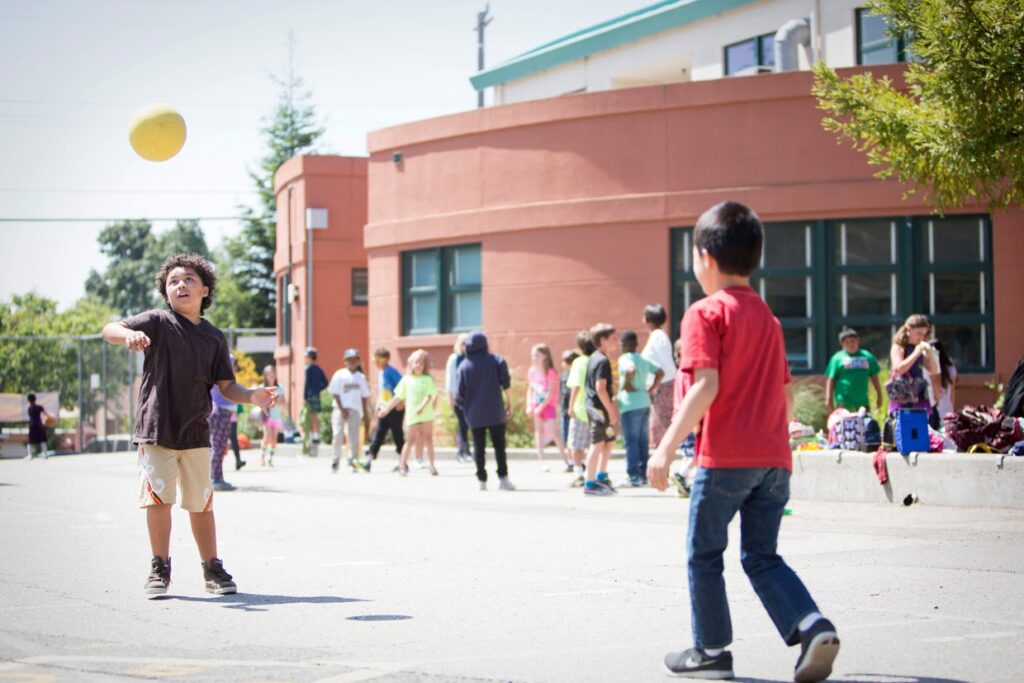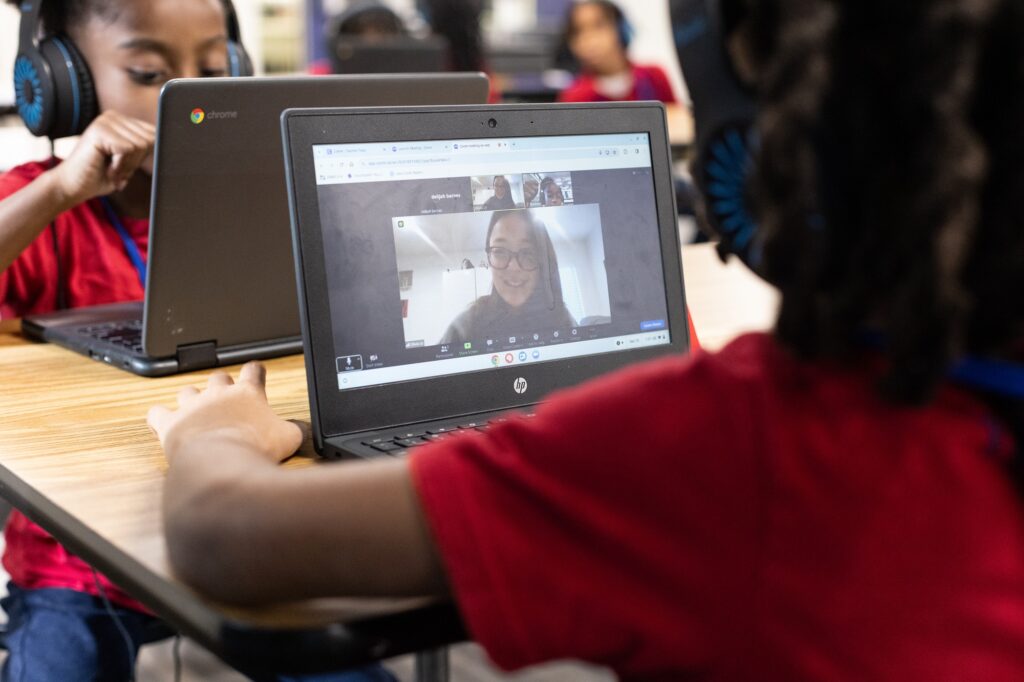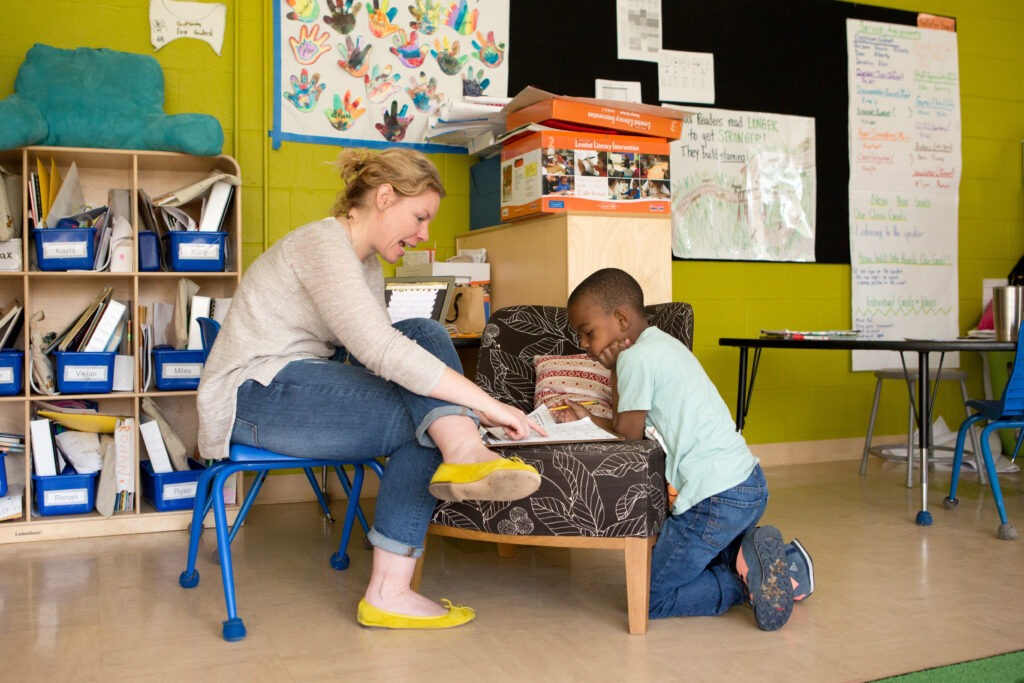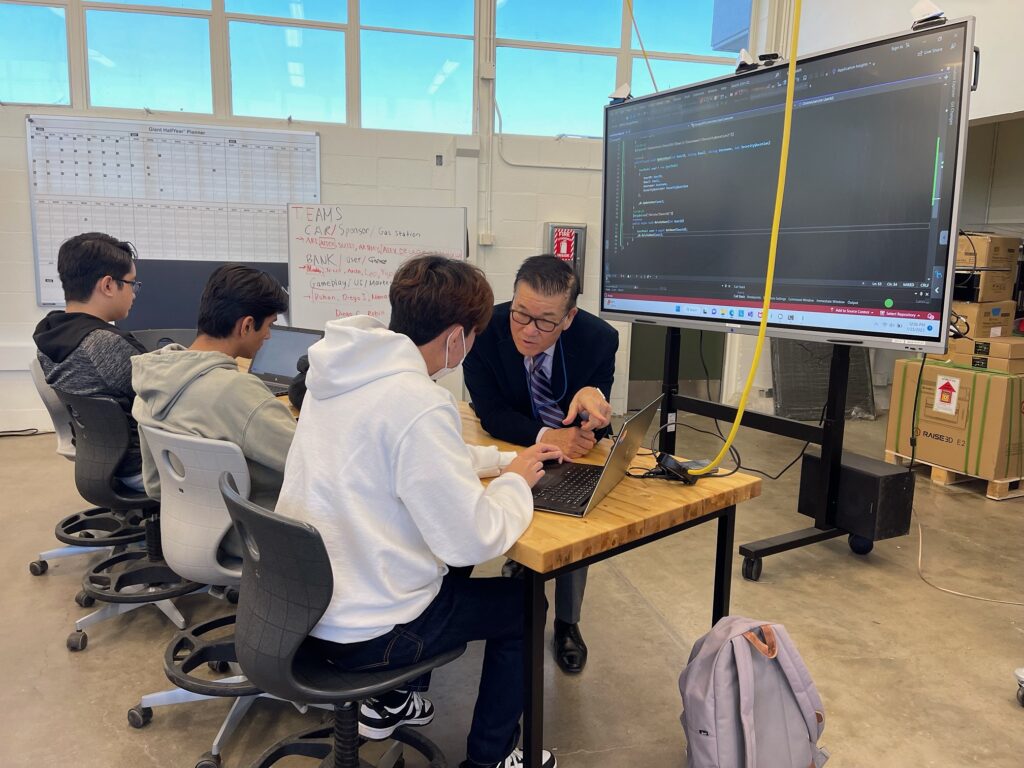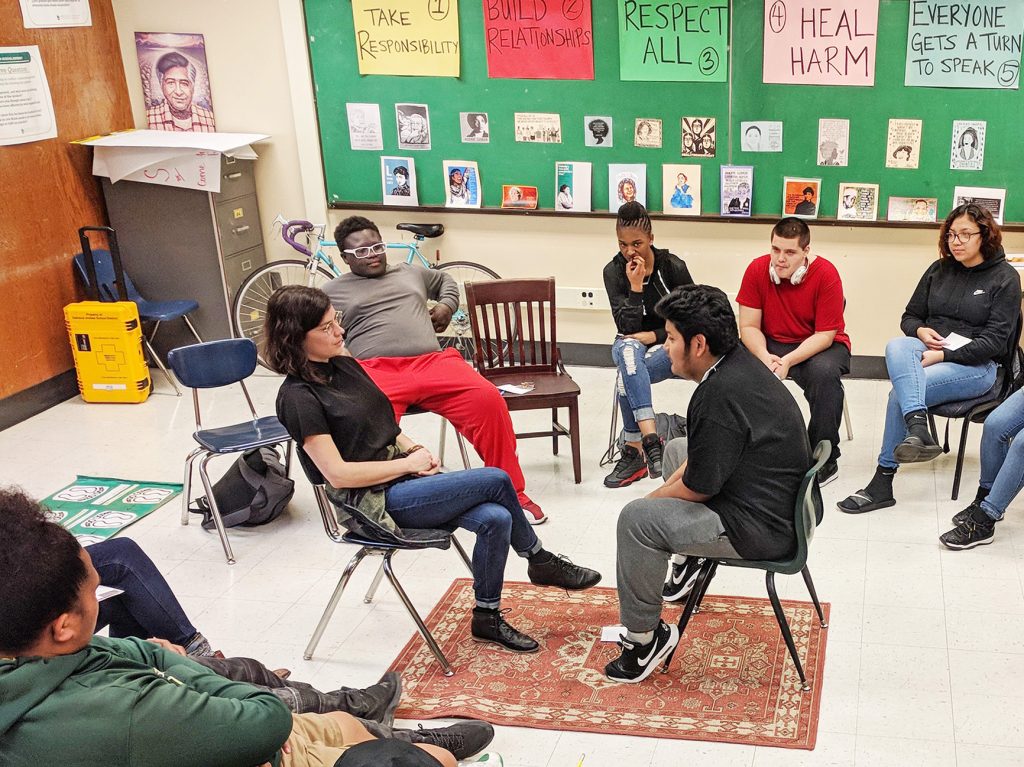
Recess at Redwood Heights Elementary School in Oakland.
Credit: Alison Yin / EdSource
When one of our sons (then a third grader) lost recess privileges for a week last school year, he came home cranky and irritable. As he put it, “Recess is the only time I can actually really play with my friends without so many rules.” Research in education, psychology, physiology, and brain science consistently points to recess as a vital part of the school day. There’s a reason most kids claim recess is their favorite subject in school.
As students across California return to their classrooms, they will step back into healthier learning environments thanks to the landmark Senate Bill 291, known as Recess for All, which requires elementary schools — for the first time in the state’s history — to provide students with at least 30 minutes of daily recess, while also prohibiting withholding recess as punishment.
The law is a response to the growing concerns about inactivity and the mental health crisis among our youth — challenges exacerbated by the Covid-19 pandemic. As public-school parents and professors who study recess and school health, we applaud the effort to not only increase students’ opportunities for school-based play but also to help address the traumas and social isolation our children faced during the pandemic.
Now we must ensure that schools implement these changes so all children have the access to recess they need and deserve.
Unfortunately, many still see recess as simply fun and games. This view — a vestige of the No Child Left Behind era, which ramped up school testing and created disincentives for developmental activities like recess, arts, music, and civics — had led some localities to reduce or eliminate regular breaks for children. This was a major issue post-pandemic when concerns about learning loss were pitted against the healing power of play in school. Research supports the importance of taking recess breaks from traditional academic subjects like math and reading; stepping away from classroom learning to move and play can help improve students’ test scores.
Why is recess so essential for California’s more than 3 million public school students? The play, teamwork, socialization, leadership and self-regulation that happen at recess are critical for child and youth development. Recess is the only unstructured time in the school day when students can acquire and practice these skills. Young children learn a tremendous amount through organized and imaginative play — how to create and follow rules, be inclusive, make good decisions and collaborate.
The physical activity that occurs at recess is important for many reasons, including helping students to get their wiggles out. But brain science tells us there is more to it than just wiggles. Physical activity and social connection at recess help students regulate their behaviors and emotions. Supporting these executive functions improves students’ abilities to concentrate and learn throughout the school day.
Providing students with daily recess can help students deal with trauma. With the distress and isolation they experienced through remote learning, coupled with the escalating mental health concerns, we need low-cost solutions to reach as many students as possible. Research shows that people under stress act reactively, and they behave poorly as a result. Recess allows students time to practice their executive functioning skills, which can help them cope better with stress and reduce anxiety.
Importantly, Recess for All is an anti-racist and equitable policy. It has the potential to close the gap in access to recess that exists in California and across the country.
Students of color and those in low-income areas routinely have less recess time than students in wealthier and whiter areas. Additionally, children of color are disproportionately more likely to be disciplined in school. By abolishing the practice of withholding recess, schools can create restorative practices that support appropriate behavior, rather than punishing students by forcing them to sit out and miss essential growth time.
Recess for All is vitally important for California’s youth. As California public school parents, we plan to speak directly to our principals, PTAs and school boards to show our educators how much we value school-based opportunities for play and socialization. We encourage other parents to do the same. Schools respond to the issues most important to parents and their communities. Talk to your school administrators about their plans for ensuring kids get the newly mandated 30 minutes of recess a day. Our children, and our communities, will be healthier for it.
•••
Rebecca A. London, Ph.D., is professor of sociology and faculty director of Campus + Community at the University of California Santa Cruz. She is author of the book “Rethinking Recess: Creating Safe and Inclusive Playtime for All Children in School” (Harvard Education Press, 2019).
Hannah R. Thompson, Ph.D., MPH, is assistant research professor at the University of California Berkeley School of Public Health. She works with school districts to study the impact of improved school-based physical activity and nutrition opportunities on student health.
The opinions in this commentary are those of the authors. If you would like to submit a commentary, please review our guidelines and contact us
